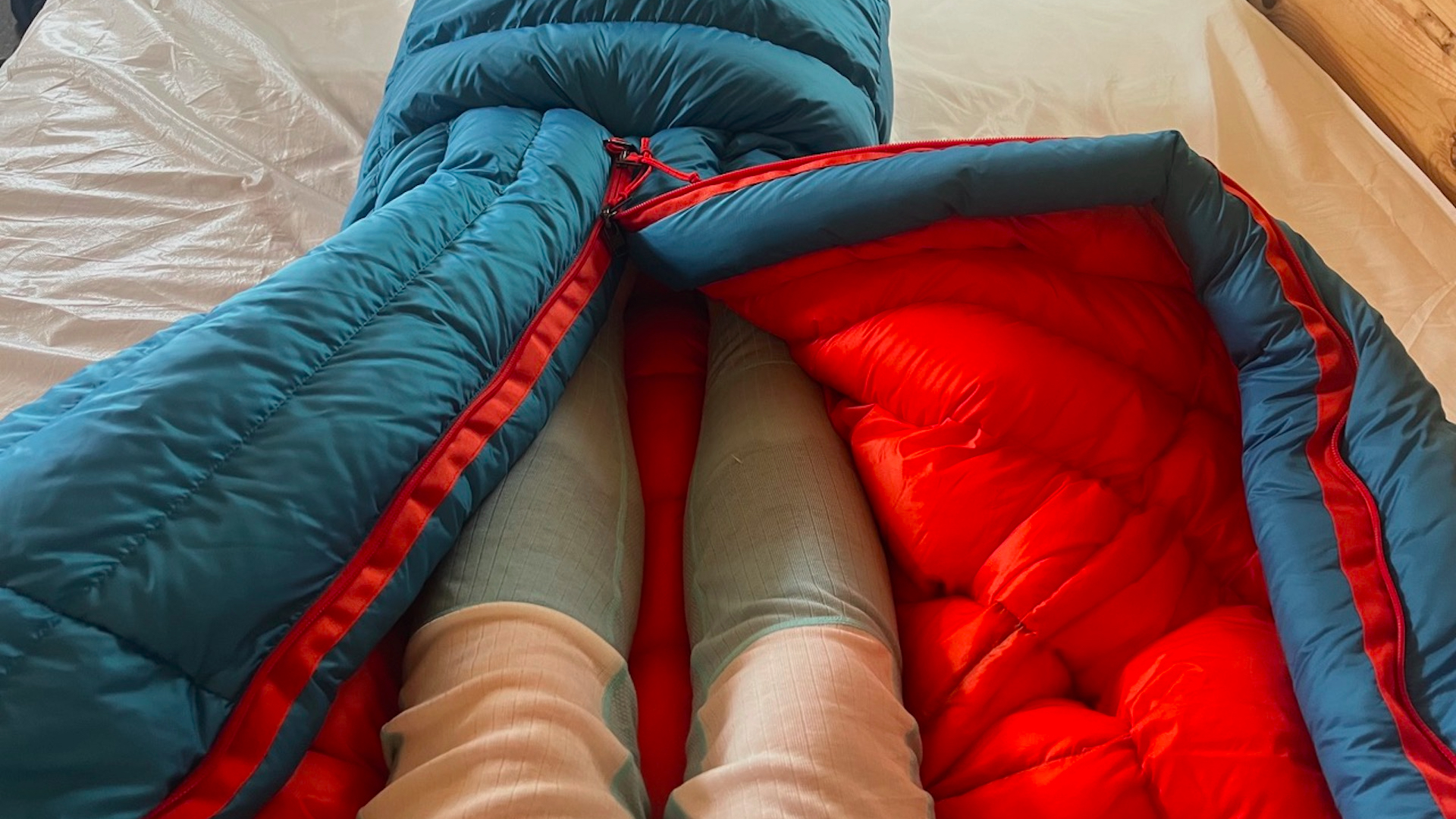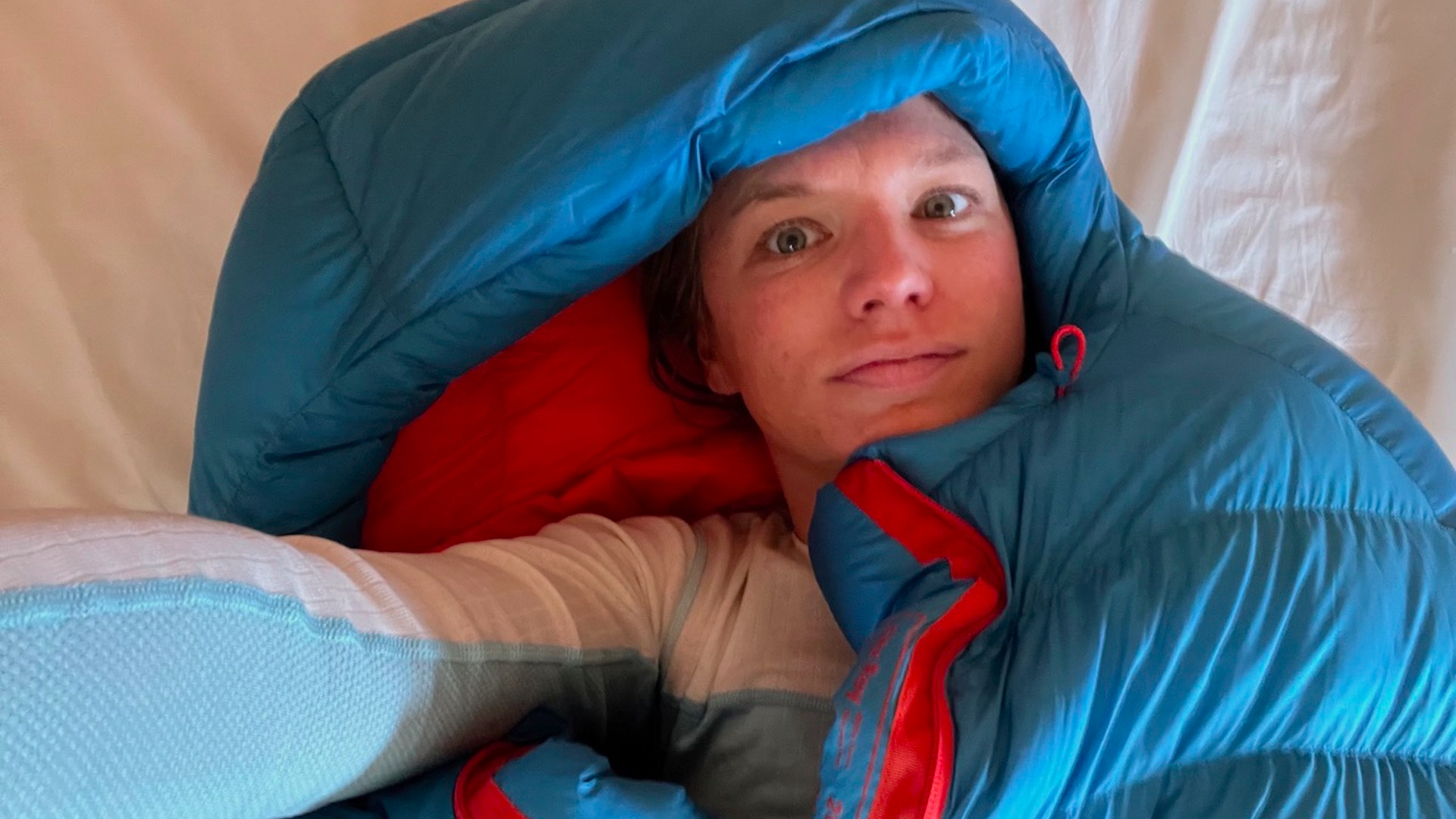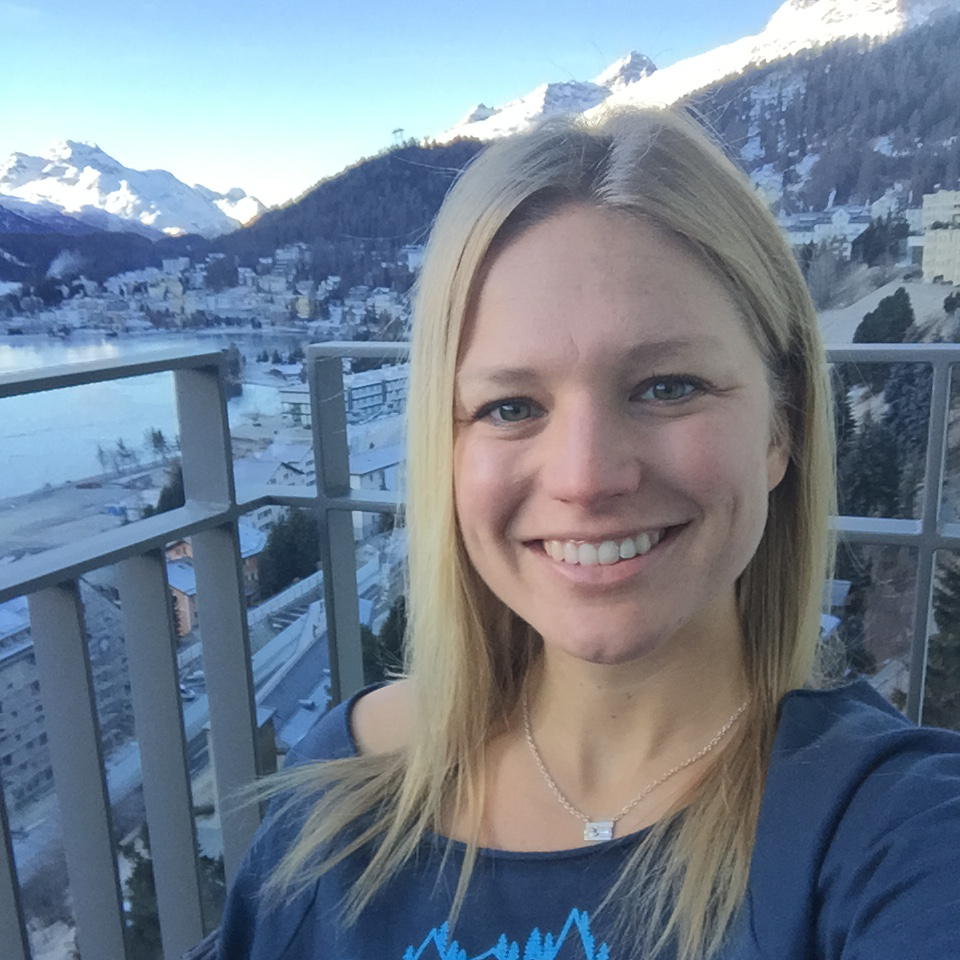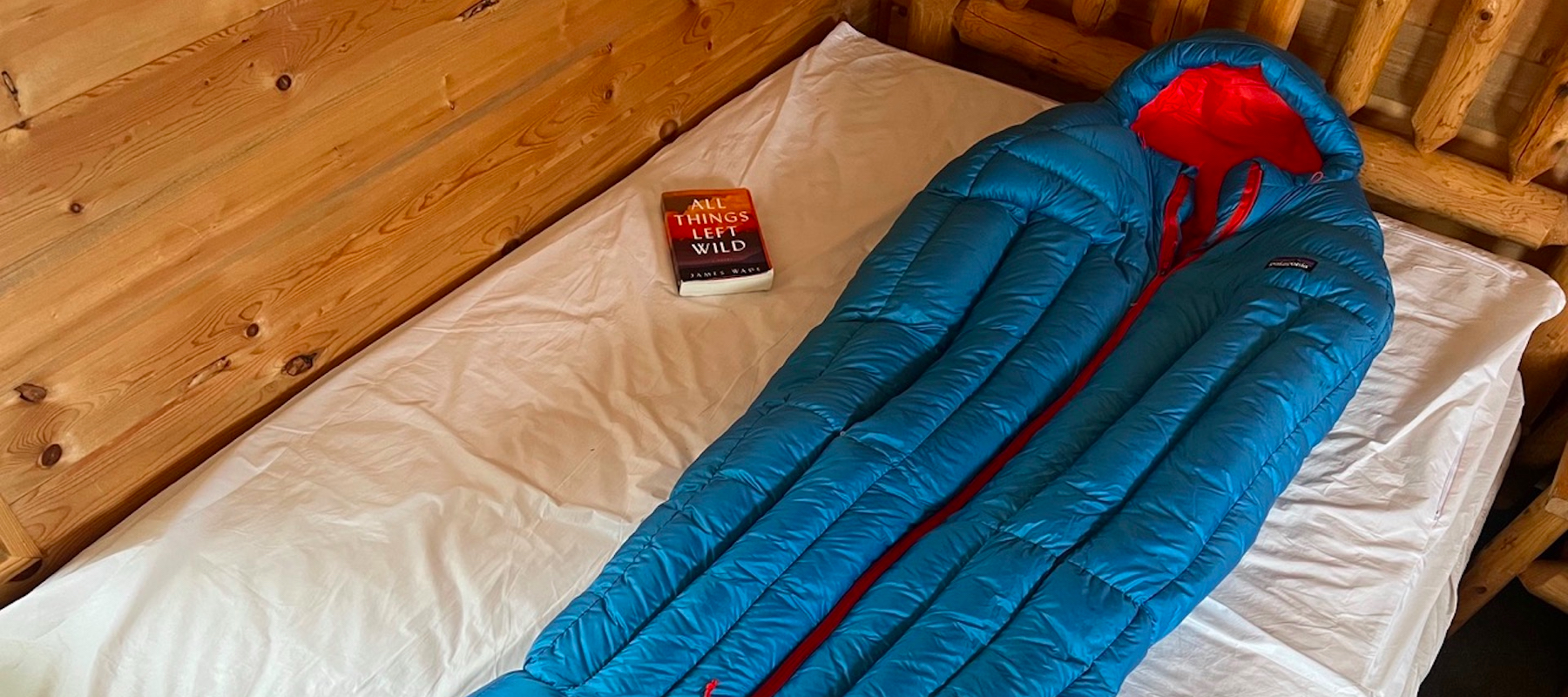Advnture Verdict
Overall, the Patagonia Fitz Roy Down Sleeping Bag is a high-quality option for camping in cold conditions. While it is more expensive than some other sleeping bags on the market, its advanced materials and features, and eco-conscious design make it a worthwhile investment to ensure you’ll be camping comfortably throughout the year.
Pros
- +
800-fill-power down is very warm and lofty
- +
Three lengths available
- +
A jacket-like hood design for an ideal fit
- +
Sculpted foot box keeps feet extra warm
- +
Internal chest pocket keeps essentials warm and accessible
- +
Water-resistant shell
- +
Eco-conscious with Advanced Global Traceable Down, 100% recycled and solution-dyed fabrics
Cons
- -
Central zip won’t suit everyone
- -
One of the pricier sleeping bags on the market
- -
This bag is heavier than ultralight backpacking options
- -
Stuff sack could offer more compression support
You can trust Advnture
Patagonia Fitz Roy Down Sleeping Bag: first impressions
The Patagonia Fitz Roy Down Sleeping Bag is one of the best sleeping bags on the market, with its high-quality 800 fill-power down, two temperature rating options, three length options, a jacket-like hood design, a sculpted foot box, internal chest pocket, water-resistant shell and eco-friendly features.
• List price: $559 (US) / £500 (UK) / €560 (EU)
• Style: Mummy
• Temperature rating: -7°C / 20°F
• Weight (regular): 1,021g / 36oz
• Length: Suitable for users up to 183cm / 6ft (short: users up to 168cm / 5ft 6in; long: users up to 198cm / 6ft 6in)
• Filling: 800 fill-power certified traceable down
• Materials: 100% recycled nylon ripstop with PFC-free DWR finish
• Zip options: Central
• Colors: Blue
• Compatibility: Four-season camping
The Patagonia Fitz Roy comes in two versions, with different temperature ratings: the 20°F / -7°C version, which I tested, and a 30°F / -1°C version. It’s also available in three length options: short, regular and long.
The bag is filled with 800-fill-power Advanced Global Traceable Down, which is ethically sourced and provides excellent insulation. One of the key features of this sleeping bag is its vertical baffles; this design helps to keep the down evenly distributed throughout the bag and prevents cold spots from forming.
As a pricier investment, the Patagonia Fitz Roy Down Sleeping Bag may not be ideal for those on a tight budget, weight-conscious backpackers or those looking for an ultra-compressible pack sack – you’ll need to make room in your hiking back pack for this one.
Patagonia Fitz Roy Down Sleeping Bag: in the field

To test it in the mountains during the cold season, I took the Patagonia Fitz Roy on a late winter backcountry skiing hut trip, and I was impressed with its performance.
The sleeping bag's 800-fill-power down is very warm and has a lot of comfortable loft. I appreciate the jacket-like hood design, which allows me to cinch it tight and keep my head and neck warm, and the sculpted foot box is also a great feature, as it always keeps my feet extra toasty and allows me to move around comfortably. The bag also has a full-length, centrally positioned zipper that can be adjusted easily for temperature regulation.

I’ve also tested Patagonia Fitz Roy Down Sleeping Bag in cold summer and fall tent-camping conditions, and in every scenario it has kept me warm and comfortable throughout the night.
The water-resistant DWR shell of the sleeping bag held up well against the moisture that accumulated inside the hut overnight, and the internal chest pocket was perfect for keeping my phone and other essentials within reach.
The Patagonia Fitz Roy Down Sleeping Bag is packable and works well for trekking into the backcountry, but it is not the lightest and most compressible option. The stuff sack does help to reduce the overall size of the bag, but a more helpful compression sack with side straps would be nice.

Kim Fuller is the co-founder of Jaunt Media Collective based in Vail, Colorado. Jaunt’s family of print and digital magazines includes YOGA + Life, Spoke+Blossom and Covered Bridge. Kim started her career in media as a freelance journalist and has contributed to a number of national and regional publications, including Elevation Outdoors, 5280 Magazine, The Denver Post, Outside, Advnture, Gear Institute, SELF Magazine, Wanderlust Journal and The Infatuation. Kim spends most out-of-office hours seeking sunshine and singletrack, teaching yoga around town, dining with friends or planning her next adventure. Stay connected through @lifeinfull on Instagram and scope the mags at jauntmediacollective.com.

